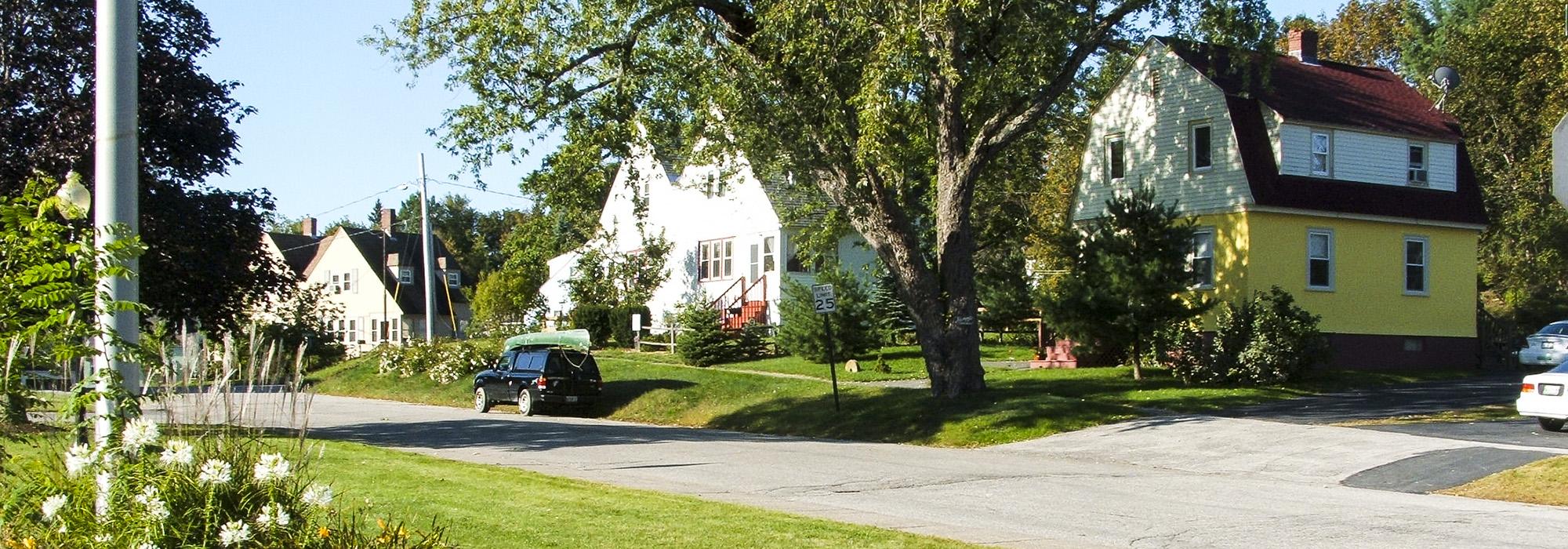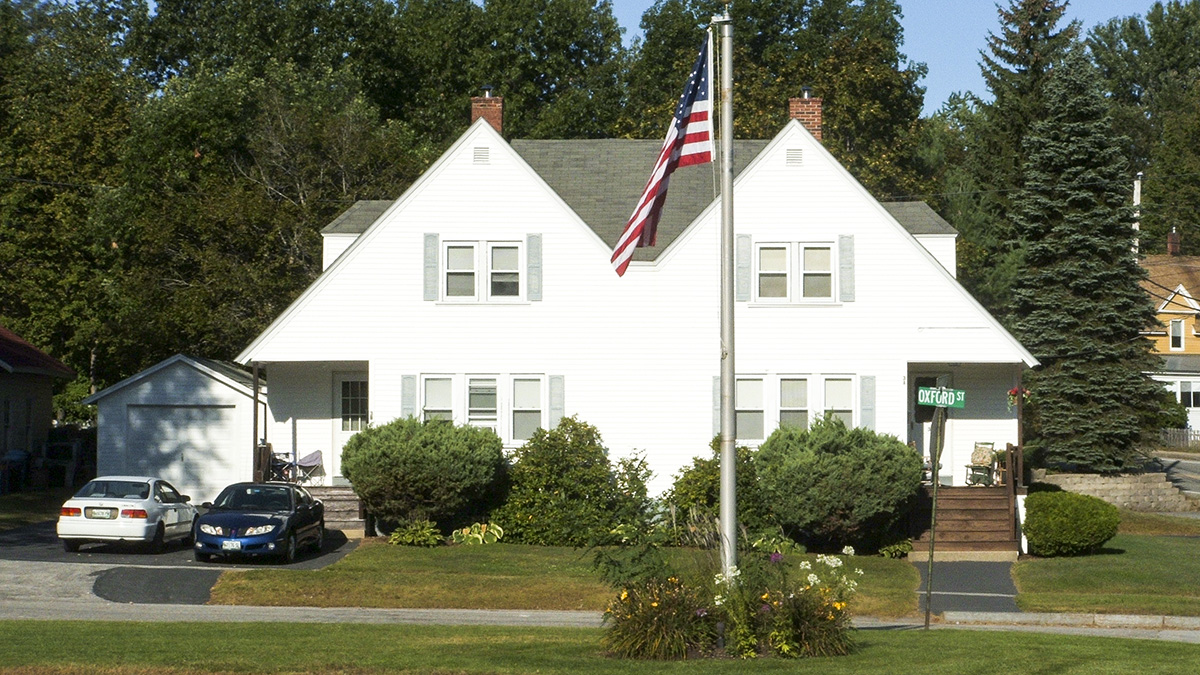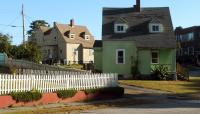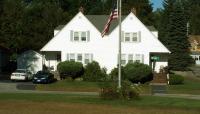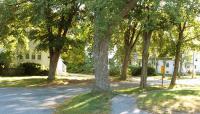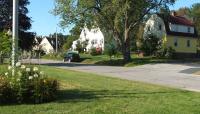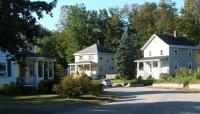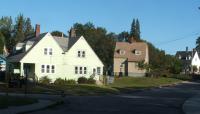Landscape Information
British entrepreneur Thomas Goodall moved to Sanford in 1867 and established the Sanford Mills, known nationwide for its mohair fabric used in railroad cars, automobiles, and hotels. The Goodall family became Sanford’s largest benefactor, building a baseball park, library, town hall, hospital, airport, golf course, and the Ridgeway subdivision, Sanford’s first large-scale housing development, built as company housing. The neighborhood’s 91 lots are situated on curvilinear roads, with narrow rights-of-way running between backyards designed for delivering coal, wood, and ice. Within the immediate vicinity of the mills, roads have sidewalks and pedestrian passageways between lots, with street trees planted in the grassy medians between the street and sidewalk. Ridgeway’s houses have porches and were finished with stucco, an unusual material in Maine; single-family homes have gambrel, gabled, or hipped roofs, while duplexes have double gables. Many lots feature evergreen shrub hedges and small concrete retaining walls to take up grade from the sidewalk. Unlike many company town owners, the Goodalls sold the houses to millworkers who could afford a down payment rather than maintaining ownership themselves.
Ridgeway remains a working-class neighborhood with much of its historic character intact. Changes include a conversion to commercial uses along Lebanon Street and the loss of the rear rights-of-way, which have been absorbed into adjacent properties.



